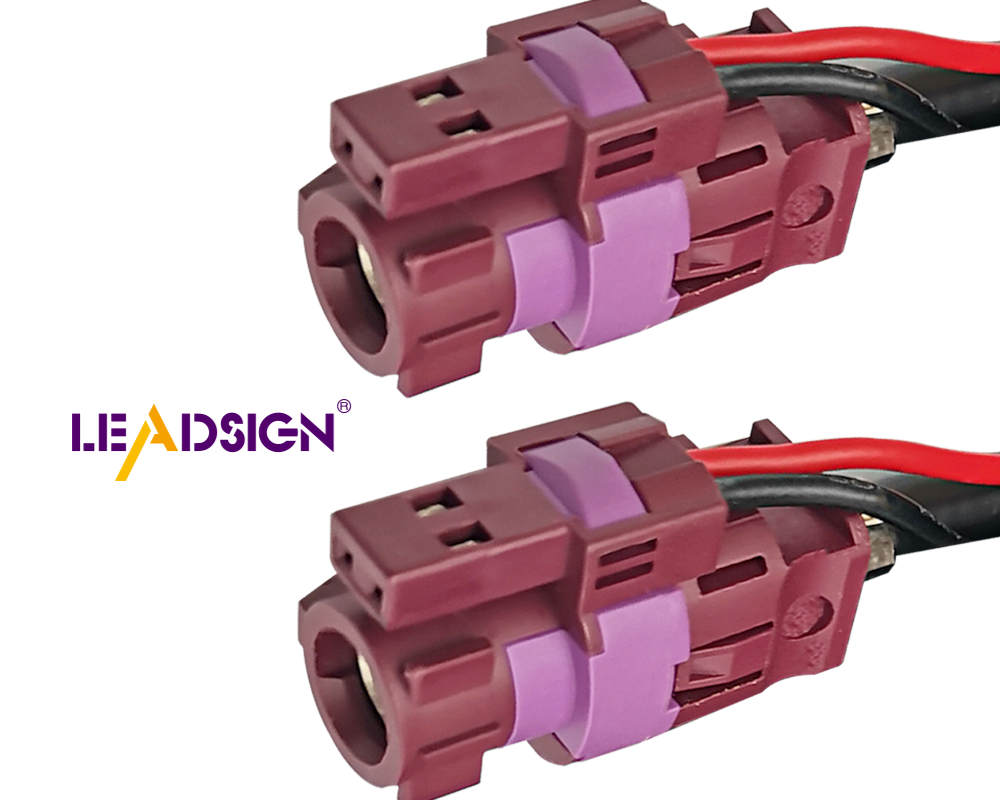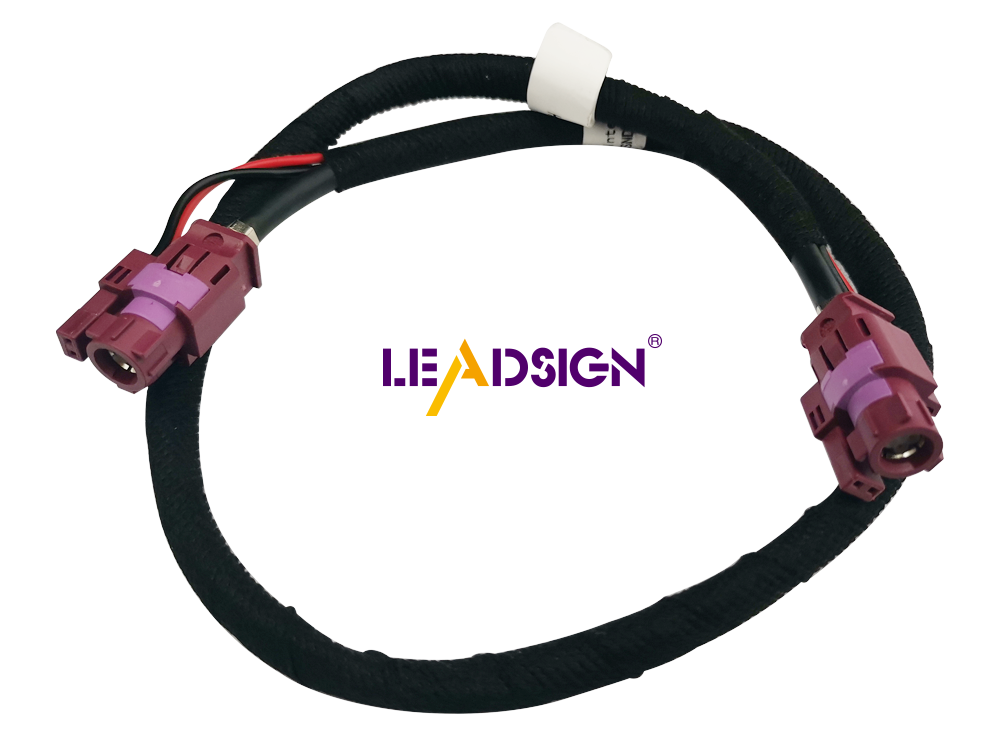The Complete Guide to Custom Wire Harness Design

Wire harnesses play a crucial role across various industries, including electronics, automation, medical equipment, and telecom systems. In the automotive sector, custom wire harnesses enhance performance and durability. The integration of RF cables and wire connectors is vital in these applications. Additionally, utilizing coax to ethernet adapters and coax cable adapters significantly improves system efficiency. Custom wire harnesses are tailored to meet specific requirements, supporting intricate machinery and hardware effectively.
Basics of Wire Harness Design

Parts Involved
Wires and Cables
Wires and cables are the main parts of a wire harness. They carry power or signals between system parts. Engineers pick wires for their ability to conduct electricity, bend easily, and have good insulation. Cables are groups of wires bundled together for extra protection.
Connectors and Terminals
Connectors and terminals join wires in harnesses. They make sure connections between wires and devices are strong. Engineers select connectors based on connection type, like plug-and-socket or pin-and-sleeve. Terminals let wires connect to other parts.
Protective Sleeves and Insulation
Protective sleeves and insulation keep wires safe from damage. They stop short circuits and keep the electrical system working well. Engineers choose sleeve materials based on how they handle heat, bend, and last long.
Things to Think About
Purpose and Functionality
The purpose of a wire harness affects its design. Engineers need to know what the harness will do to make it work well. This helps the harness meet performance needs.
Weight and Space Limits
Weight and space limits matter in wire harness design. Engineers must fit everything into small spaces while keeping it light. Using light materials makes the harness fit better.
Durability and Environmental Conditions
Durability affects how long a wire harness lasts. Engineers think about heat, moisture, and shaking when picking materials for the harness. Strong designs handle tough conditions over time.
Material Choice
Choosing materials is key in wire design. Engineers pick them for their electric strength, toughness, and how they match with other parts. Right material choice ensures good performance.
The Design Process
Making Diagrams
Using Special Computer Programs
Designers use special computer programs to draw wire harness diagrams. These programs show how parts connect. Engineers can test electrical flows and find problems early. This helps reduce mistakes in the final product. The programs also make it easy to change designs.
Planning Layouts
Planning layouts means arranging parts in the wire harness. Engineers think about the space they have. Good layout makes wires and cables run smoothly. This stops interference and boosts performance. Engineers must avoid mistakes like bad routing or wrong bundling, which can cause system failures.
Building and Testing
Improving Designs Step by Step
Building a prototype lets engineers create an early wire harness version. Testing this model shows what needs fixing. Engineers change designs based on tests to improve them step by step. This ensures the final design works well and meets all needs.
Meeting Standards
Following industry rules is important in wire harness design. Engineers check that the harness is safe and performs well by testing it against standards. Skipping tests might mean not meeting these rules, causing recalls or failures later on. Following standards ensures a high-quality, safe wire harness.
The Assembly Process
Detailed and Time-Consuming Tasks
Cutting and Stripping Wires
Making a wire harness starts with cutting wires. Workers use special tools to cut wires right. Each wire has to be the right length. Stripping means taking off the plastic on wire ends. This gets wires ready to connect. Good cutting and stripping help make strong connections.
Crimping and Soldering
Crimping and soldering join wires to parts. Crimping squeezes a connector onto a wire tight. Soldering melts metal to stick wire and connector together. Both need skill to do well. Good crimping and soldering stop connection problems.
Harnessing and Bundling
Harnessing puts wires into one group. Workers tie or cover them with sleeves. This keeps them safe from harm. Bundling makes putting them in machines easier too. Neat bundles help avoid electrical mix-ups.
Case Studies:
Leonardo SpA: Companies like Leonardo SpA use new tech for making harnesses. Their jets have 700 connectors each! They test every harness carefully, showing how important precision is.
Aerospace makers always try to get better at this work by using new tech, ensuring top-quality harnesses.
Wire harness assembly needs careful work. Every step matters for the whole harness performance. Industries like aerospace depend on careful assembly for safety in important uses.
Pre-made vs. Custom Wire Harnesses
Advantages of Pre-made Harnesses
Cost-Effectiveness
Pre-made wire harnesses are cheaper for many businesses. Factories make lots of these at once, lowering the price per piece. This bulk making helps companies save on materials and work costs. Companies with small budgets pick pre-made harnesses to keep spending low.
Availability and Convenience
Pre-made harnesses are ready to use right away. Businesses can get them fast from stores without waiting for special orders. Quick access helps factories stick to their plans without delays. The ease of pre-made harnesses makes them great for quick projects.
Benefits of Custom Solutions
Tailored to Specific Needs
Custom wire harnesses fit specific needs by being specially made. Engineers create these to match different job requirements exactly. This custom fit means they work best in their own settings. Industries like car-making and medical tools gain from this special design.
Enhanced Performance and Reliability
Custom solutions boost performance and reliability where it matters most. Engineers choose parts that suit each project’s needs well. This careful choice makes harnesses last in tough spots and work steadily. Custom wire harnesses are reliable in fields like telecoms and automation.
Uses in Different Industries
Car Electronics
Why Custom Wire Harnesses Matter
Cars need custom wire harnesses a lot. These harnesses link important car parts. They help different electric systems work well. Custom harnesses make sure each part gets the right power and signals. Engineers design them for specific cars to boost safety and performance. Using custom harnesses cuts down on electrical problems, saving money on repairs.
What RF Cables and Connectors Do
RF cables and connectors are key in car electronics. They help send radio signals inside the car. RF cables and connectors link antennas to radios and GPS, keeping communication clear. Connectors join wire sections, making strong connections. Adding RF cables and connectors makes the car's electronics work better.
Phone Networks and Digital Systems
How Coax to Ethernet Adapters Help
Phone networks use coax to ethernet adapters a lot. These adapters change coax signals into ethernet ones for smooth data flow. They give fast internet and good network links in systems. Coax to ethernet adapters mix old coax setups with new ethernet tech well.
Joining with Coax Cable Adapters
Coax cable adapters are important in phone systems. They connect coax cables to devices, helping data move smoothly. These adapters improve signal quality by cutting interference down. Telecom companies use them to grow networks and make services better.
Designing custom wire harnesses needs careful planning. Engineers think about wire connectors and rf cables. They also use coax to ethernet adapters. These parts help systems work well in many uses. The design is complex, so testing is key, especially in aerospace. Companies like Leonardo SpA show why testing is important for trustworthiness. Custom harnesses give special solutions that boost how things work and last longer. Knowing the details of wire harness design helps us see its value in today's tech world.
See Also
Navigating Ford Fakra Connectors: A Comprehensive Overview
Enhancing Automotive Data Transfer: Cutting-Edge Connectors and Wires
Foundations of HSD Connectors in Automotive Technology
Boosting Performance with HFM Connectors in Auto Engineering
Decoding Fakra HSD LVDS 4 Pin Connector: An In-Depth Wiring Manual

